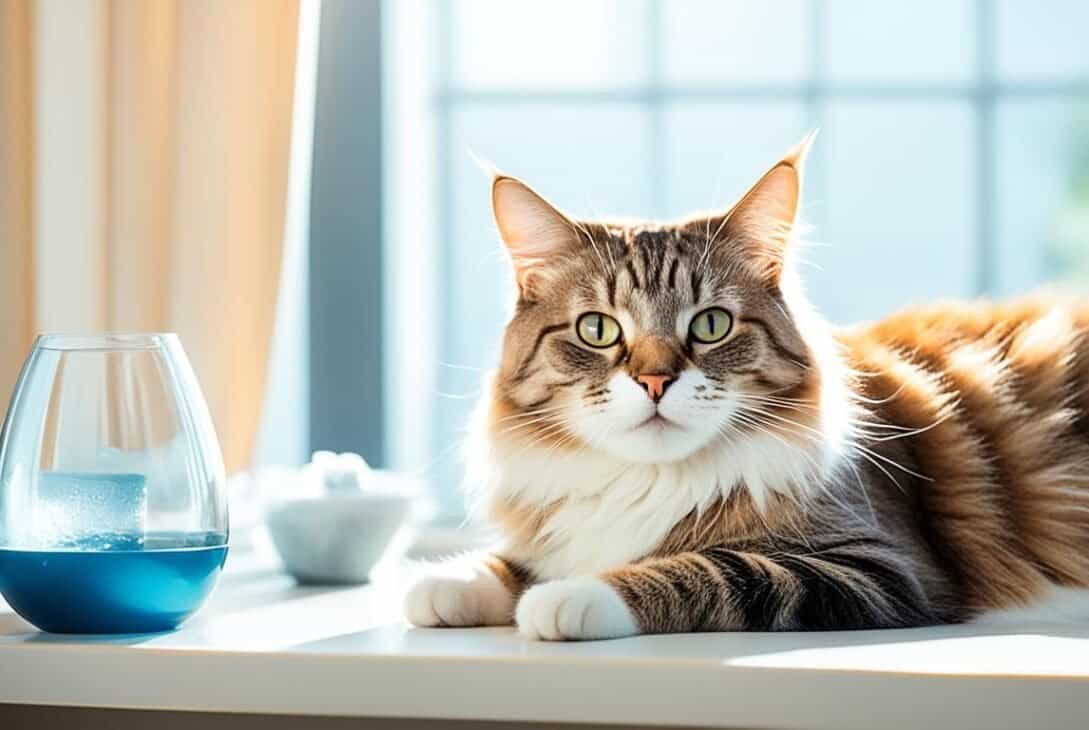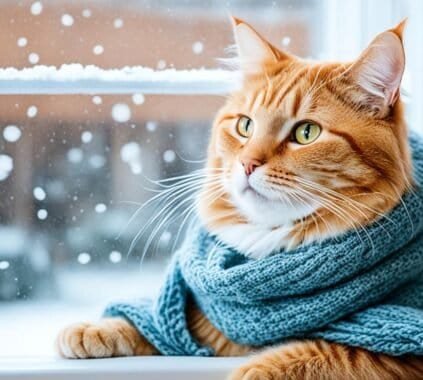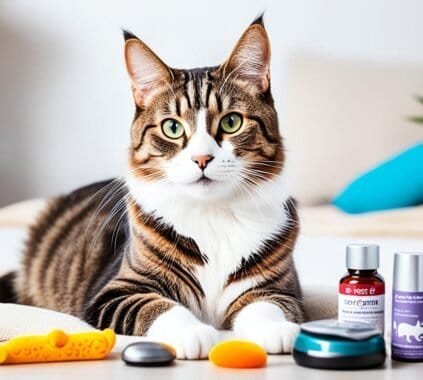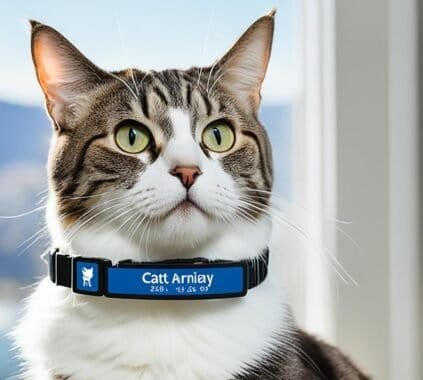As summer approaches, it’s crucial to be aware of cat heatstroke prevention in cats and take the necessary precautions to keep our feline friends safe and comfortable. Cats are more susceptible to heatstroke than humans, and their delicate bodies can quickly overheat, leading to severe health complications.
Heatstroke in cats can be life-threatening, but fortunately, there are steps you can take to prevent it. By understanding the signs of heatstroke, providing ways to cool down your cat, and implementing summer safety measures, you can ensure a happy and healthy summer for your beloved pet.
In this article, we will take a closer look at the signs of heatstroke, how to effectively cool down your cat, and provide essential summer safety tips. By following these vital guidelines, you can significantly decrease the risk of heat-related illnesses and keep your cat cool and content during the hottest months of the year.
Key Takeaways:
- Heatstroke in cats can be life-threatening and requires immediate attention.
- Common signs of heatstroke in cats include excessive panting, drooling, and lethargy.
- Effective ways to cool down a cat include providing fresh water, creating a cool environment, and using damp towels.
- Summer safety tips for cats include providing shade, never leaving cats in cars, and limiting outdoor activities during peak heat hours.
- Preparing your cat for hot weather involves grooming, proper hydration, and utilizing cooling aids.
Recognizing the Signs of Heatstroke in Cats
In order to ensure the well-being of your feline companion, it is vital to be able to recognize the signs of heatstroke in cats. This section will outline the common symptoms to look out for, enabling you to take prompt action and prevent further complications. Remember, early detection is key to saving your cat’s life.
If your cat is exposed to excessive heat or high temperatures, they may exhibit the following signs:
- Excessive panting: Cats pant to cool themselves down, similar to dogs. If you notice your cat panting heavily and excessively, it may indicate heatstroke.
- Drooling: Excessive drooling can be a sign of overheating. If you notice your cat drooling excessively and more than usual, it may be a cause for concern.
- Lethargy: Cats are typically active and alert. However, heatstroke can cause lethargy or a lack of energy. If your cat appears unusually tired or weak, it may be a sign of heatstroke.
- Restlessness and agitation: Heatstroke can also make cats feel restless or agitated. If your cat is pacing, excessively grooming themselves, or unable to settle, it could be a sign of heat-related distress.
- Increased heart rate: Heatstroke can elevate a cat’s heart rate. If you notice your cat’s heart beating faster than normal, it’s important to take immediate action.
- Vomiting: Heatstroke may cause cats to vomit. If your cat is throwing up or appears nauseous, it could be a result of heat-related illness.
- Disorientation: In severe cases of heatstroke, cats may experience disorientation or even collapse. If you observe any signs of disorientation, seek veterinary attention immediately.
If you notice any of these signs in your cat, it is essential to take immediate action to cool them down and seek veterinary care. Remember, heatstroke can be life-threatening, and timely intervention is crucial.
How to Cool Down a Cat
When your cat is showing signs of heatstroke or heat exhaustion, it’s crucial to take immediate action to cool them down. By following these effective techniques, you can help regulate your cat’s body temperature and prevent the risk of heat-related illnesses.
- Provide fresh water: Make sure your cat has access to fresh, cool water at all times. Consider adding ice cubes to their water bowl to keep it cooler for longer.
- Create a cool environment: Keep your cat in a well-ventilated area with plenty of shade. Close curtains or blinds to block out direct sunlight and use fans or air conditioning to maintain a comfortable temperature.
- Use damp towels: Dampen a towel with cool (not cold) water and gently rub it on your cat’s fur. Focus on areas with less hair, such as the belly and paw pads. The evaporating water will help cool their body.
- Encourage bathing: Some cats enjoy being bathed, especially if the water is lukewarm. If your cat tolerates bathing, you can use this method to help lower their body temperature. Remember to avoid cold water, as it can cause shock.
- Apply cool packs: Place cool packs wrapped in a thin towel next to your cat or under their paws. Do not place the cool packs directly on their skin, as this can cause discomfort or injury.
Remember, if your cat’s condition worsens or they do not improve after attempting these cooling methods, it’s essential to seek veterinary attention immediately. Heatstroke in cats can be life-threatening, and prompt medical intervention is vital for their well-being.
By taking these precautions and knowing how to cool down a cat effectively, you can help prevent heat exhaustion and ensure your feline friend stays safe and comfortable during hot weather.
Summer Safety Tips for Cats
When the temperature rises, it’s crucial to take proactive measures to protect your cat from the dangers of heat exposure. Here are some essential summer safety tips to keep your feline friend cool and comfortable during hot weather:
- Provide Ample Shade: Ensure that your cat has access to shaded areas both indoors and outdoors. This will help them escape the direct sunlight and lower their body temperature.
- Avoid Leaving Cats in Cars: Never leave your cat unattended in a parked car, even for a short period. The temperature inside a car can skyrocket, putting your kitty at risk of heatstroke.
- Limit Outdoor Activities: During the hottest parts of the day, it’s best to limit outdoor activities for your cat. Schedule playtime or walks in the early morning or late evening when the temperature is cooler.
- Keep Hydration a Priority: Make sure your cat always has access to fresh, clean water. Consider placing multiple water bowls in different areas of your home to encourage hydration.
- Create a Cool Environment: Set up fans or provide a cool and well-ventilated space for your cat to relax. You can also use cooling mats or provide access to tiled or cool surfaces where they can lay.
- Monitor Indoor Temperature: Keep an eye on the indoor temperature and use air conditioning or fans to maintain a comfortable environment for your cat.
- Be Mindful of Grooming: Regular grooming can help prevent excess fur and maintain proper airflow, keeping your cat cooler during hot weather.
By following these summer safety tips for cats, you can ensure that your furry companion stays safe and cool in the scorching heat. Stay vigilant and prioritize their well-being throughout the summer months.
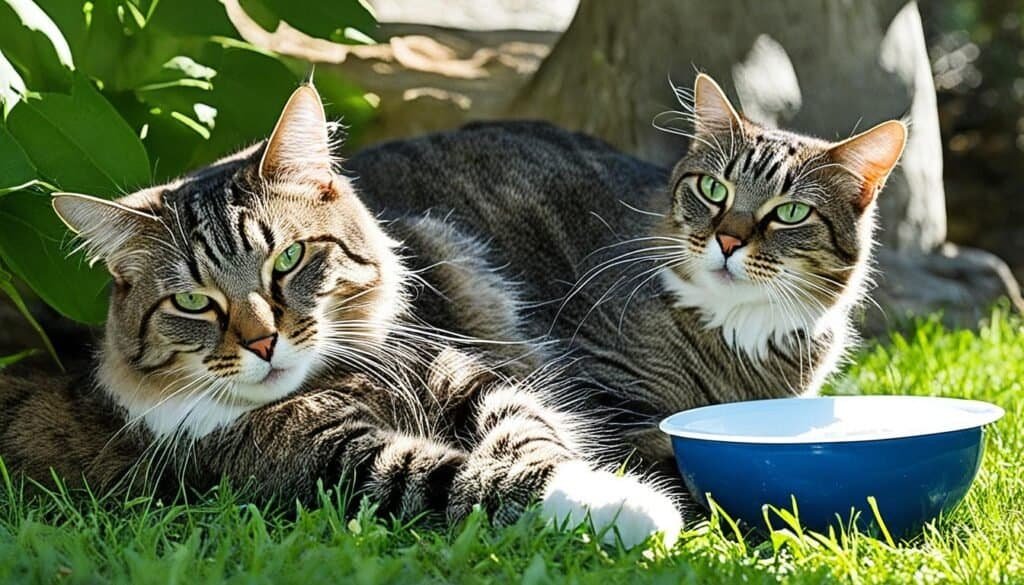
Preparing Your Cat for Hot Weather
As the temperatures rise, it’s important to take proactive measures to keep your cat cool and safe in hot weather. By preparing your feline friend for the heat, you can help prevent heat exhaustion, practice cat heatstroke prevention and ensure their well-being throughout the summer months. Here are some essential summer safety tips for cats:
Grooming to Remove Excess Fur
One of the first steps in preparing your cat for hot weather is to groom them regularly to remove excess fur. Cats have a natural shedding process, but brushing them can help remove loose hair and prevent matting, which can trap heat. Regular grooming sessions not only keep your cat’s coat in good condition but also help them stay cool by allowing proper airflow.
Ensuring Proper Hydration
Hydration is crucial to preventing heat exhaustion in cats. Make sure your cat has access to fresh and clean water at all times. Consider placing multiple water bowls in different areas of your home, especially in cooler rooms. You can encourage your cat to drink more water by using a pet fountain or adding ice cubes to their water bowl. Additionally, wet food can help with hydration, as it contains moisture that contributes to their overall fluid intake in order to practice cat heatstroke prevention.
Using Cooling Aids
Providing cooling aids can make a significant difference in keeping cats cool in hot weather. Consider using cooling mats or pads for your cat to rest on. These mats are designed to absorb and dissipate heat, providing a cool surface for your cat to lie on. You can also introduce toys or blankets that have been chilled in the refrigerator for a short period to practice cat heatstroke prevention.
Creating a Cool Environment
Ensure your cat has access to cool and shaded areas in your home. Keep curtains or blinds closed during the hottest parts of the day to block out direct sunlight. If possible, provide a well-ventilated room with a fan or air conditioning to keep the temperature down. Creating a cool environment will greatly help in cat heatstroke prevention.
By following these summer safety tips and proactively preparing your cat for hot weather, you can help ensure their comfort and avoid potential heat-related illnesses. Remember, keeping cats cool in hot weather is essential for their well-being.
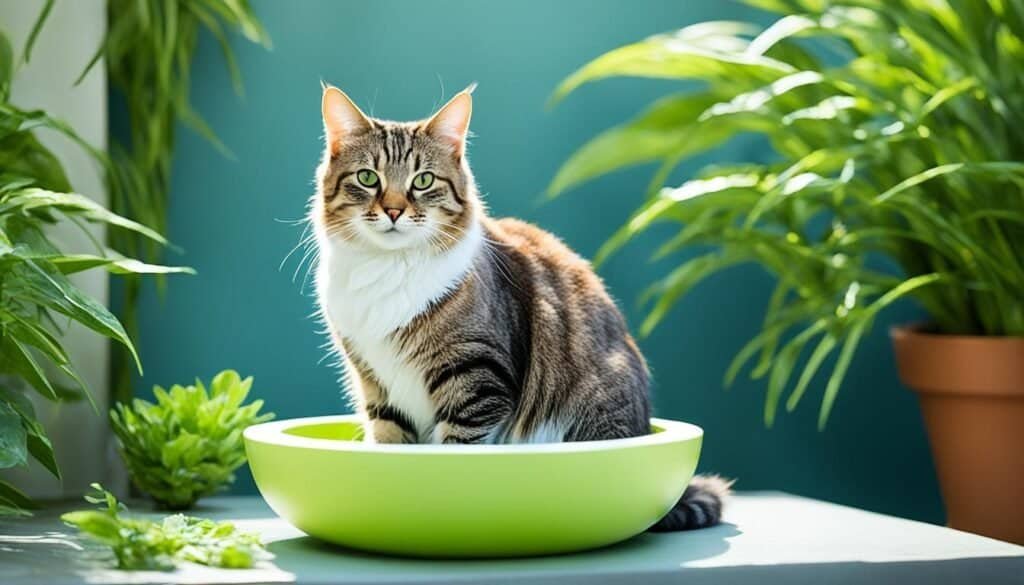
Conclusion
To protect your beloved cat from the dangers of heatstroke, it is crucial to implement these essential tips for cat heatstroke prevention. By being vigilant and proactive, you can significantly reduce the risk of your feline friend suffering from heat-related illnesses during the hot summer months.
Remember to provide necessary cooling measures to keep your cat comfortable and safe. This includes ensuring they have access to fresh water at all times, creating a cool and shaded environment, and using damp towels or cooling mats to regulate their body temperature.
Always prioritize your cat’s well-being by limiting outdoor activities during the hottest parts of the day and never leaving them in cars. Additionally, consider grooming your cat to remove excess fur and using cooling aids such as toys or gadgets specifically designed to keep them cool.
By following these guidelines and taking proactive measures, you can enjoy a worry-free summer with your cat, knowing that you have done everything possible to prevent heat-related illnesses and keep them happy and healthy.
FAQ
How can I practice cat heatstroke prevention with my cat?
What are the signs of heatstroke in cats?
How can I cool down my cat if they show signs of heatstroke?
What are some summer safety tips for cats?
How can I prepare my cat for hot weather?
Last modified: March 12, 2024

